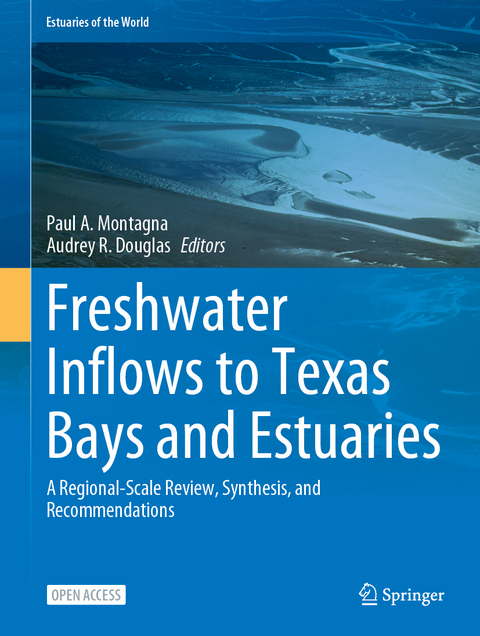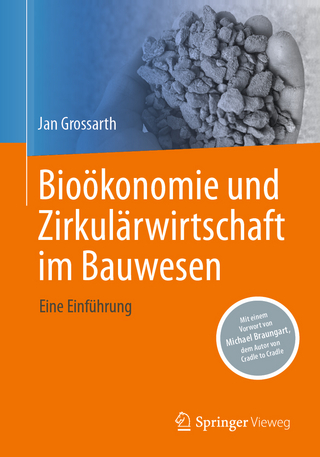
Freshwater Inflows to Texas Bays and Estuaries
Springer International Publishing (Verlag)
978-3-031-70881-7 (ISBN)
- Noch nicht erschienen - erscheint am 08.12.2024
- Versandkostenfrei innerhalb Deutschlands
- Auch auf Rechnung
- Verfügbarkeit in der Filiale vor Ort prüfen
- Artikel merken
Estuaries are defined by mixing of river and sea water, thus freshwater inflow is a key driver of estuary ecosystem structure and function. While there is much concern about water quality, there is much less about water quantity. As water is diverted for human use, less is flowing to the coast, which threatens estuary ecosystems. Some jurisdictions are now setting inflow standards, but there is no consensus on how to identify how much freshwater an estuary needs. There is a climatic gradient along the northwestern Gulf of Mexico coast and estuaries vary from hydrologically positive to neutral to negative, and this makes the Texas coast the ideal place to study how ecological processes vary with freshwater inflow. An estuary comparison approach is used in this open access work to examine hydrology, circulation, salinity, nutrients, carbonate, dissolved oxygen, plankton, nekton, benthos, and habitat dynamics and responses across varying hydrological regimes.
Paul A. Montagna received a B.S. in Biology from SUNY Stony Brook (1971), an M.S. in Biology from Northeastern University (1975), a Ph.D. in Biology from the University of South Carolina (1983), and completed a postdoctoral fellowship at the Lawrence Livermore National Laboratory (1986). He was a professor at the University of Texas at Austin, Marine Science Institute from 1986 - 2006, where he was the creator and founding manager of the Mission-Aransas National Estuarine Research Reserve in 2006. In September 2006, he joined the Harte Research Institute for Gulf of Mexico Studies and is currently the Endowed Chair for HydroEcology, Director for Texas OneGulf Center of Excellence, Campus Lead for the National Oceanic and Atmospheric Administration Center for Coastal & Marine Ecosystems, Professor in the Physical & Environmental Sciences Department, Regents Professor in the Texas A&M System, and Co-Editor in Chief for the Springer Nature journal Estuaries and Coasts. He has Performed freshwater inflow studies in all Texas estuaries; edited a special issue of the journal Estuaries on "Freshwater Inflow: Science, Policy and Management;" published a book entitled "Hydrological Change and Estuarine Dynamics;" acted as a consultant to set flow standards in California, Florida and Texas; worked with the U.S. State Department, Agency for International Development, to develop inflow guidelines to protect the coastal zone of developing countries; and was a member of the Science Advisory Committee for the Texas Environmental Flows Advisory Group.
Audrey R. Douglas received a B.S. in Environmental Science with minors in Biology and Geography from the University of Oregon, and a Ph.D. in Coastal and Marine System Science from Texas A&M University-Corpus Christi in 2020 She is currently a Program Coordinator and Instructor at Texas A&M University-Corpus Christi affiliated with the Center for Water Supply Studies. She brings her interdisciplinary background in coastal hydrology, groundwater-surface water interactions, submarine groundwater discharge, and biogeochemistry to the study of the ecological importance of freshwater and terrestrial inflows to coastal systems. Audrey's research interests include the influence of coastal hydrology and freshwater inflows on nutrient sources and fate and how these processes influence the ecology and biology of bays and estuaries. She is also interested in the integration of stakeholders/community partners (federal, state, local, industry, non-profit, and grassroots organizations) into the research process from the first steps of co-development of research questions to the final steps of dissemination of information and inclusion of findings and recommendations in the decision-making processes. Building relationships with stakeholders/community partners and facilitating connections between these partners, faculty, and students is a major component of the National Science Foundation-funding research traineeship (NRT) for which she is the program coordinator.
Chapter 1. Introduction - History of Inflow Studies in Texas.- Chapter 2. Historical Perspective and Context of Freshwater Inflow Policy and Law in Texas.- Chapter 3. Climate Effects on Inflows.- Chapter 4. Hydrology, Circulation, and Salinity.- Chapter 5. Groundwater-Surface Water Interactions in the Coastal Zone.- Chapter 6. Influence of Inflows on Estuary Sediments.- Chapter 7. Nutrient-Phytoplankton Dynamics in Texas Estuaries.- Chapter 8. Physical and Biogeochemical Conditions and Trends in Texas Estuaries.- Chapter 9. Coastal Wetland Habitats in Texas.- Chapter 10. Submerged Aquatic Vegetation, Marshes, and Mangroves.- Chapter 11. Effect of Freshwater Inflow on Benthic Infauna.- Chapter 12. Effects of Climate-Driven Salinity Regimes on Oyster Disease Dynamics at Local and Regional Scales.- Chapter 13. Plankton Dynamics in Texas Estuaries.- Chapter 14. Nekton and Mobile Epibenthos.- Chapter 15. Nitrogen and Phosphorous Budgets for Texas Estuaries.- Chapter 16. Social and Economic Values of Environmental Flows to the Coast.- Chapter 17. Summary of Recommendations for the Future.
| Erscheint lt. Verlag | 8.12.2024 |
|---|---|
| Reihe/Serie | Estuaries of the World |
| Zusatzinfo | Approx. 400 p. 200 illus., 100 illus. in color. |
| Verlagsort | Cham |
| Sprache | englisch |
| Maße | 210 x 279 mm |
| Themenwelt | Naturwissenschaften ► Biologie ► Ökologie / Naturschutz |
| Schlagworte | biogeochemistry • Environmental flow • estuary • Freshwater inflow • Productivity |
| ISBN-10 | 3-031-70881-4 / 3031708814 |
| ISBN-13 | 978-3-031-70881-7 / 9783031708817 |
| Zustand | Neuware |
| Haben Sie eine Frage zum Produkt? |
aus dem Bereich


